ConfLab Uncertainty
The ConfLab Uncertainty Software is mainly based on the concepts addressed by the most widely known and applied guide for analytical chemistry uncertainty estimation, the Eurachem/Citac guide [01].
This guide highlights that uncertainty evaluation requires the analyst to carefully observe all possible sources of uncertainty. However, while a detailed study of this type may require considerable effort, it is essential that the effort applied is not disproportionate. This concern is also emphasized by Michael Thompson [02], who states that undue emphasis on traceability and a particular approach to uncertainty has proven counterproductive.
In practice, a preliminary study will quickly identify the most significant sources of uncertainty, which may begin with the measurand equation and validation data, and the value obtained for the combined uncertainty will be largely controlled by the largest contributions. A good estimate of uncertainty can be made by focusing efforts on the major contributors. Ultimately, once the uncertainty for a method applied in a specific laboratory has been assessed, the estimated uncertainty can be consistently applied to subsequent results obtained by this method in the same laboratory, provided this is justified by the laboratory’s quality control data. No additional effort is required unless the procedure or equipment is modified, in which case the uncertainty estimate should be revised as part of normal revalidation. [01] This statement is also supported by ISO/IEC 17025:2017 [03], which highlights in its requirement 7.6.3 (note 2): “For a particular method in which the measurement uncertainty of results has been established and verified, there is no need to evaluate measurement uncertainty for each result, provided the laboratory can demonstrate that the factors identified as critical are under control.”
The software allows retrieving validation data for uncertainty estimation and presents numerous types of sources that can be selected to meet the particularities of each test method as shown below. Each source is automatically inserted into an Ishikawa diagram, and all results are presented in a Pareto diagram (to assess the major contributors) followed by the final uncertainty.
-
Uncertainty of Linearity
- Model and ordinary regression;
- Weighted regression model;
- Uncertainty of Precision study (Repeatability)
- Uncertainty of Precision study (Intermediate)
- Uncertainty of Accuracy (Fortified Samples)
- Uncertainty of Accuracy (Use of Reference Material)
- Uncertainty of Mass
- Uncertainty of Volume
- Uncertainty in Solution Standardization
- Uncertainty of Reference Material
- Uncertainty from Other Sources or Equipment
-
Uncertainty of Sampling
- Anova;
- Range Double Split;
- Uncertainty of Control Chart
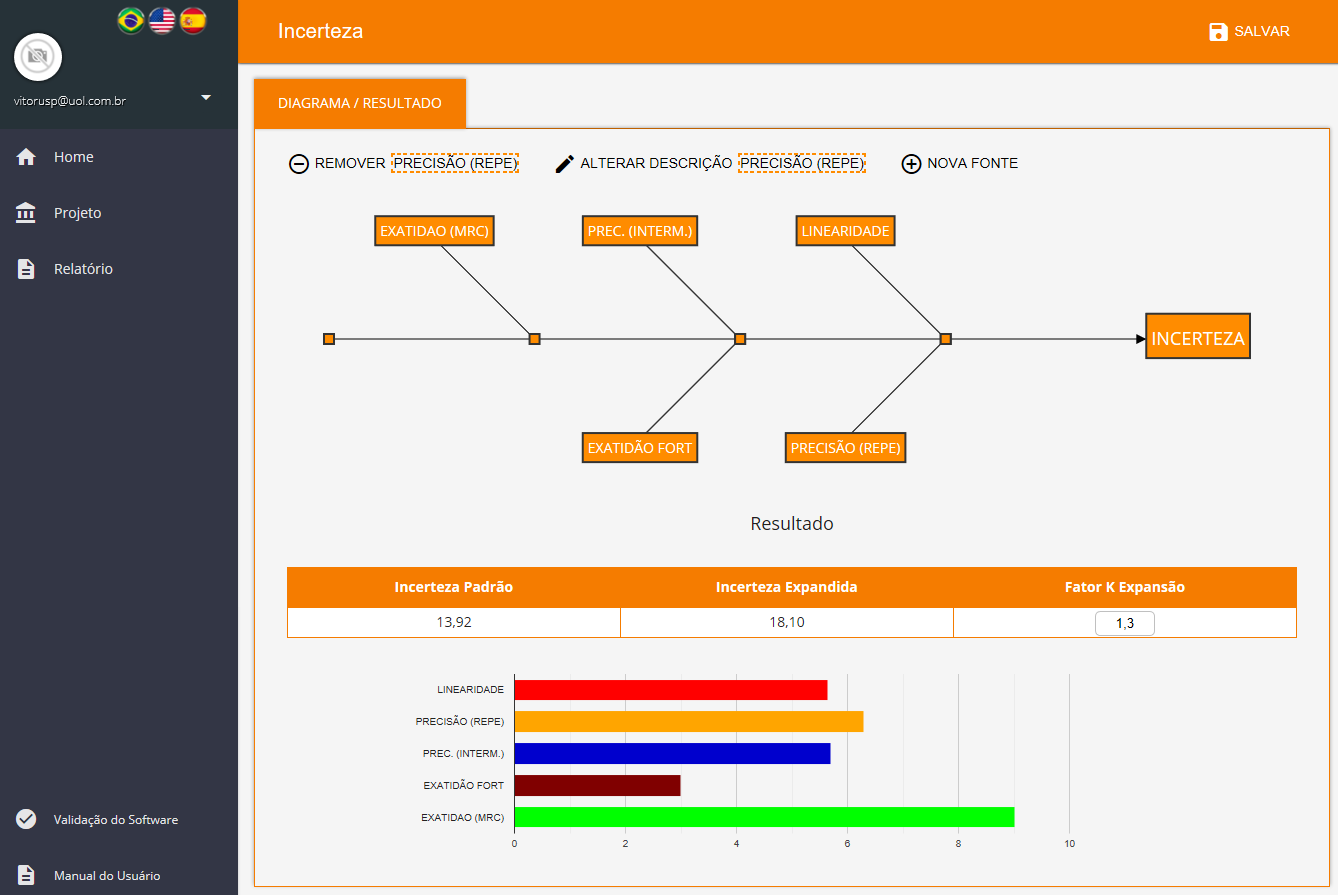
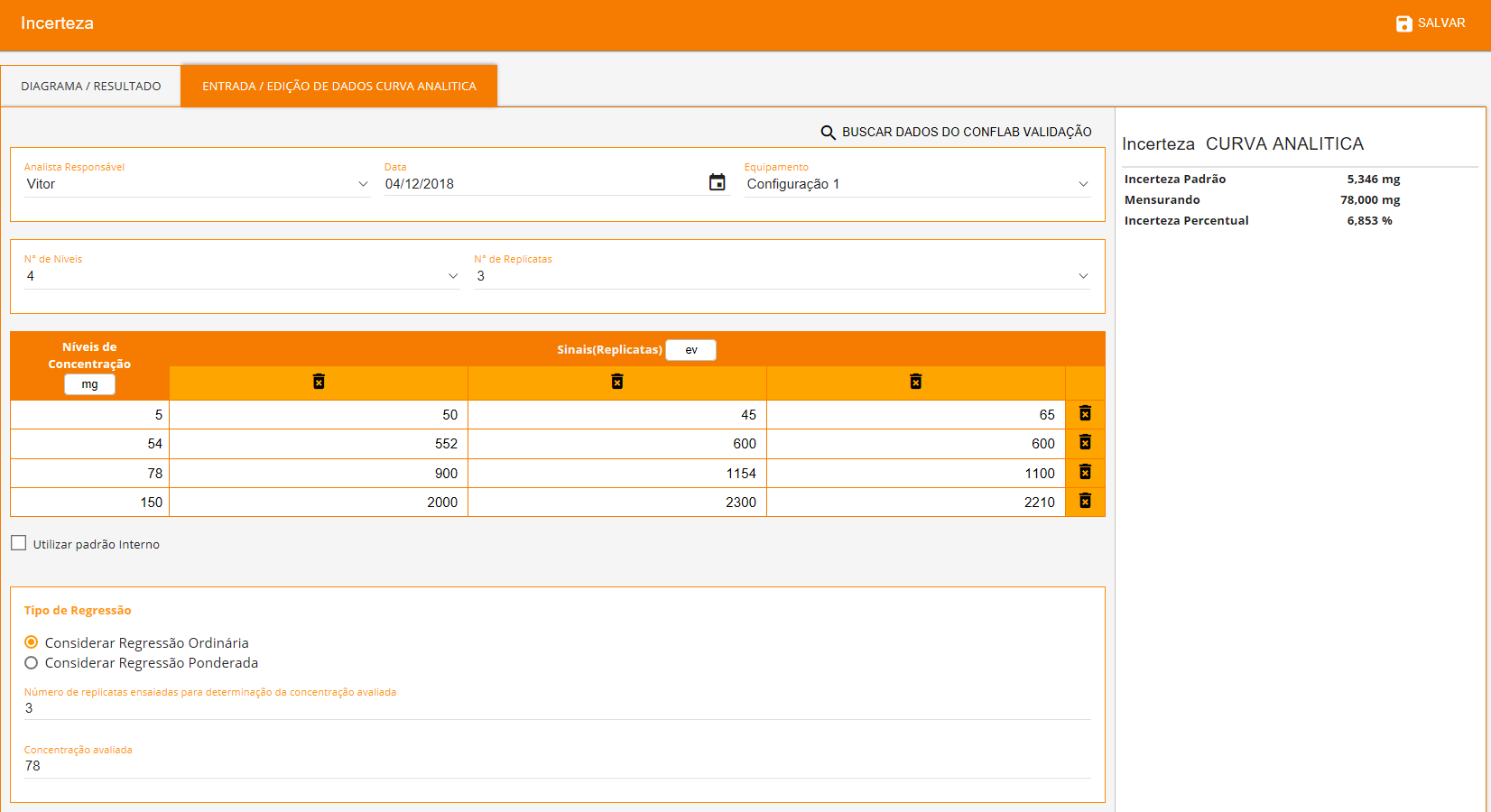
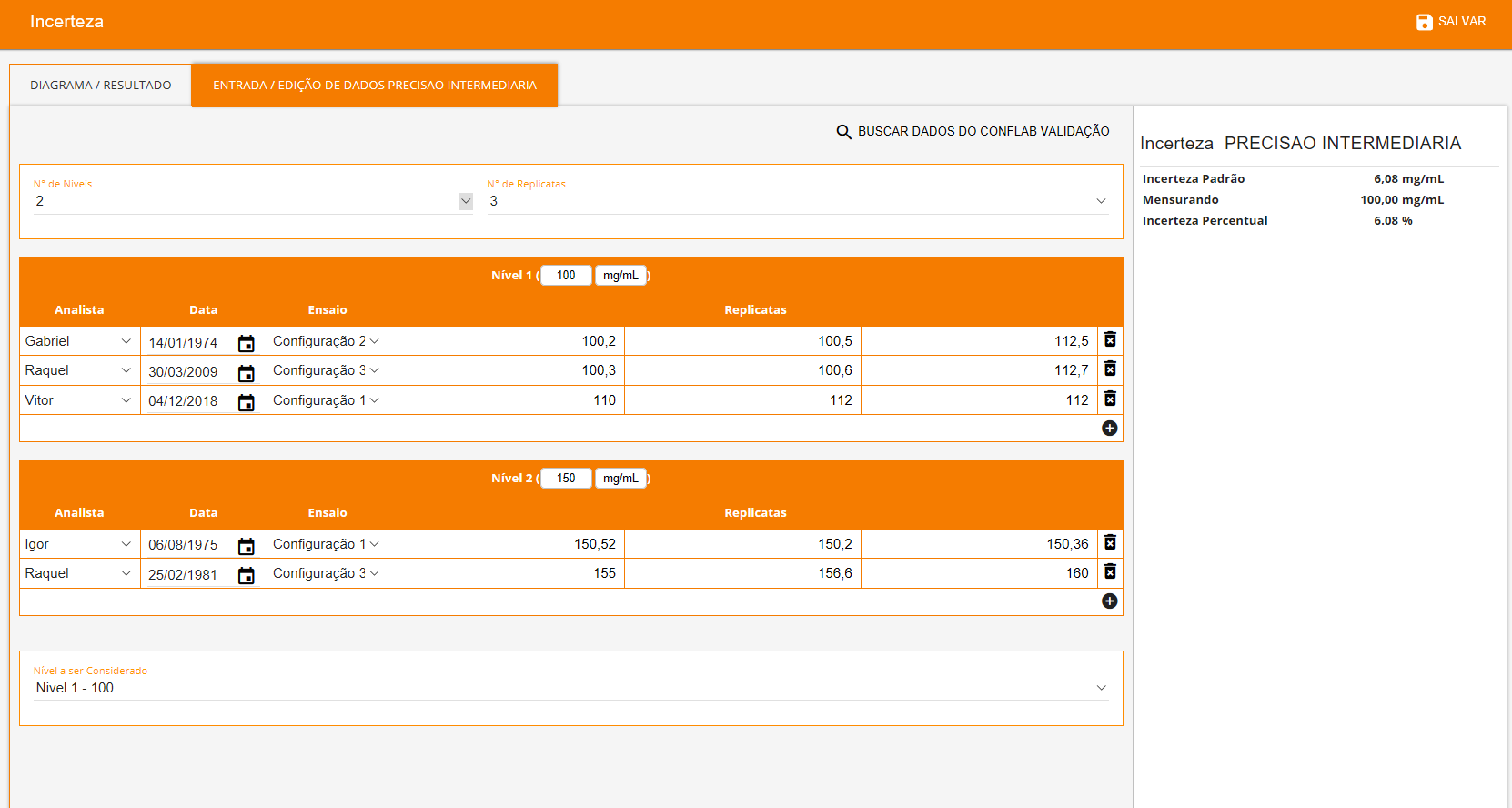
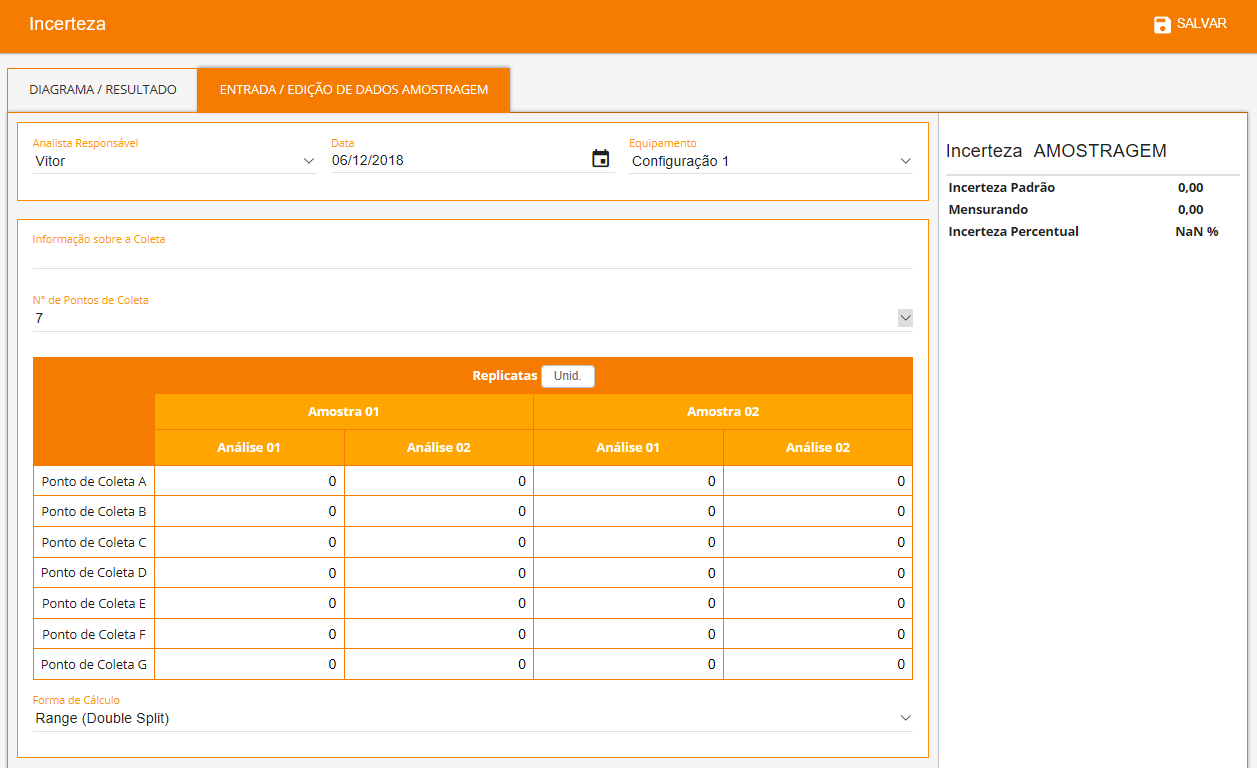
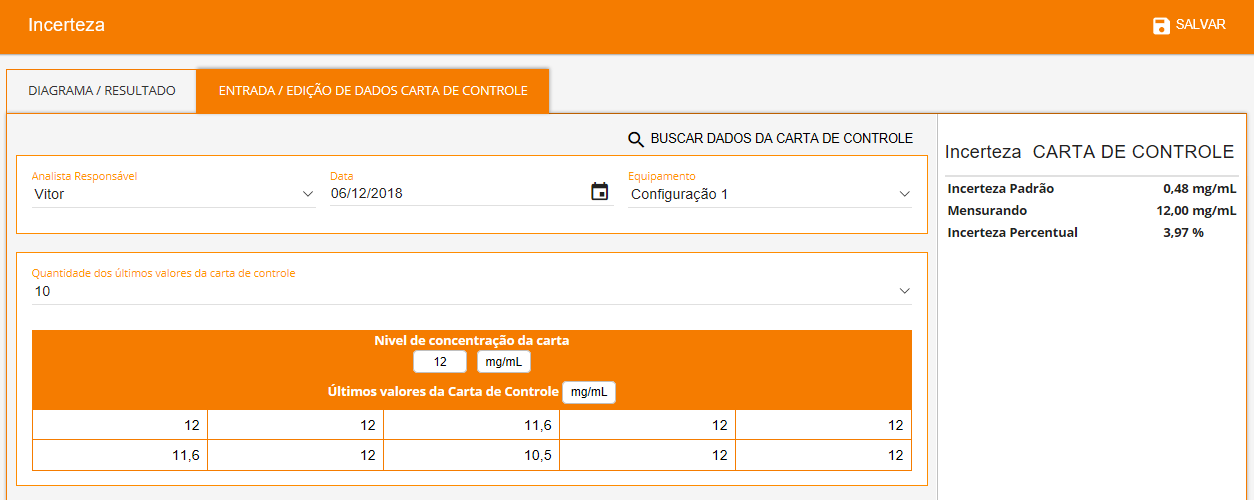

 VALIDATION, UNCERTAINTY AND
CONTROLE DE QUALIDADE
VALIDATION, UNCERTAINTY AND
CONTROLE DE QUALIDADE



